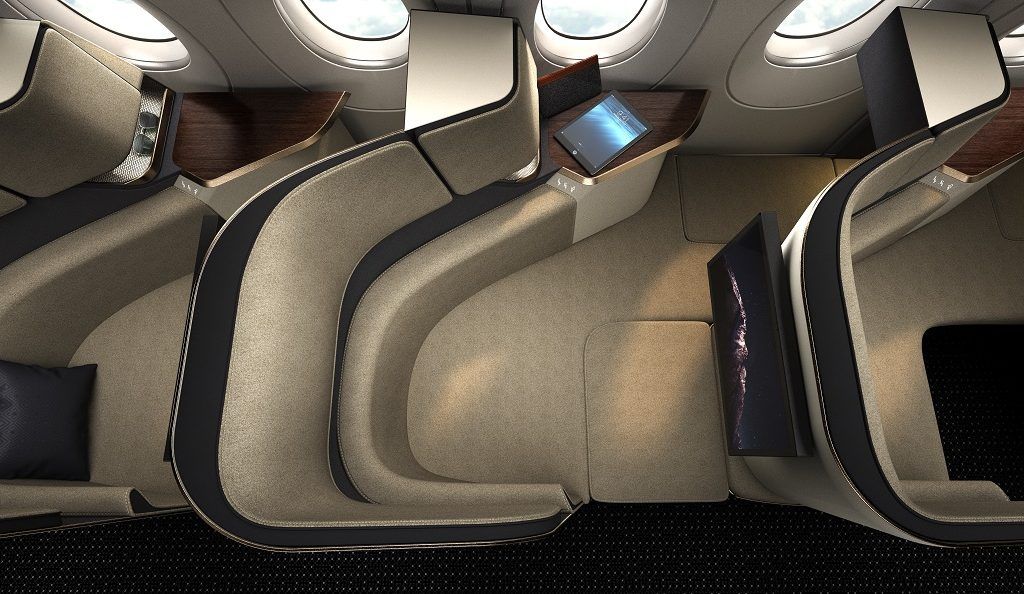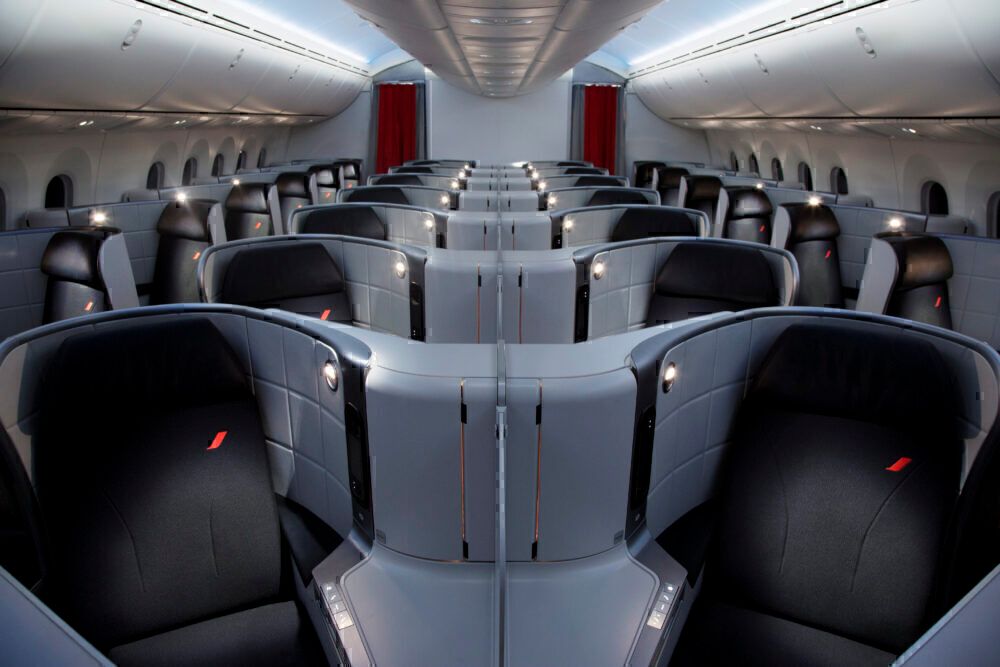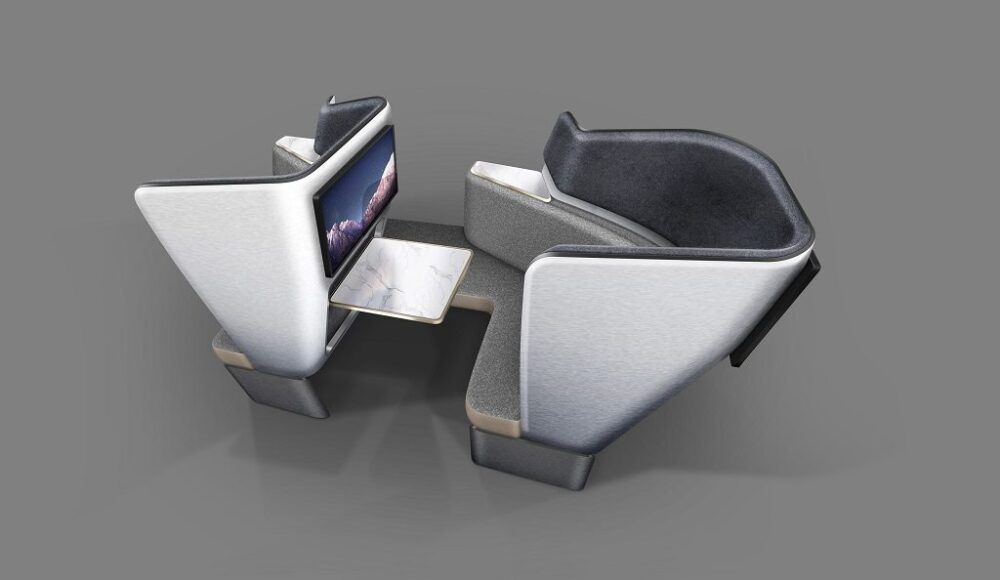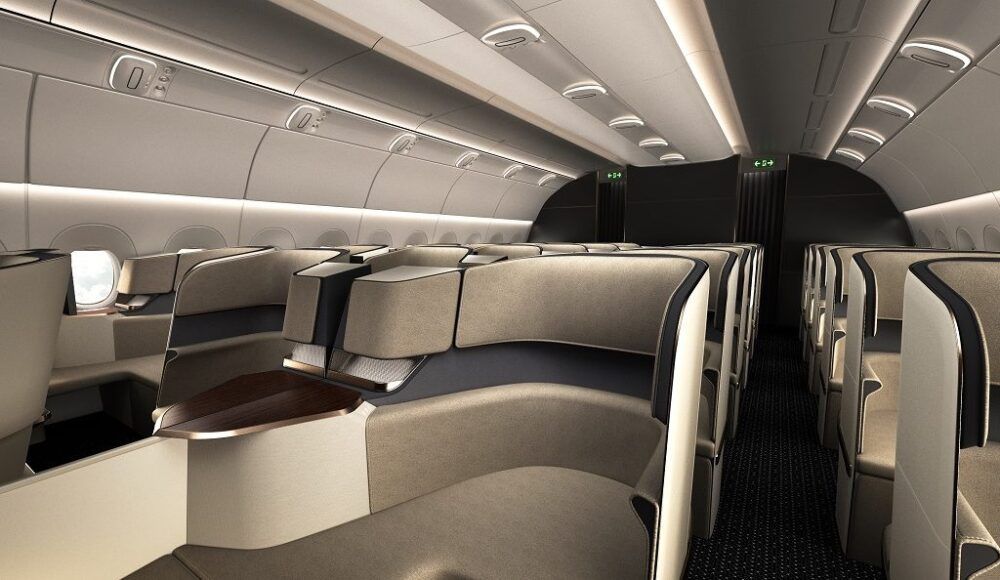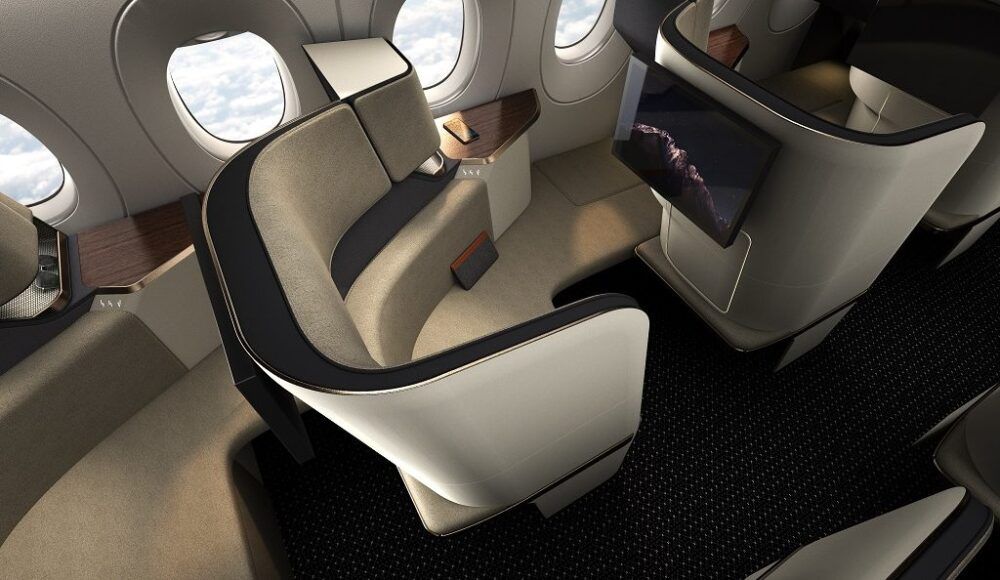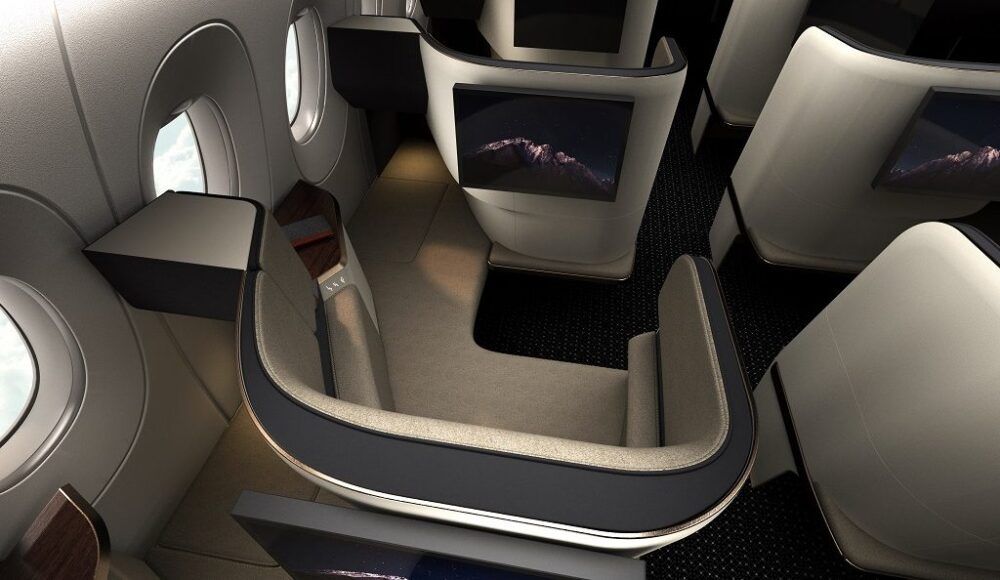Business class seats are getting ever more luxurious, but are also getting ever more complex. Seats slide and fold, tilt and stretch, to give the passenger increasing options for flying comfortably. But all this complexity comes at a cost, both in terms of maintenance and the weight of the seat. A concept by Safran seeks to change all that, providing optimal comfort with lightweight simplicity. This concept is called ‘essential’.
The heavy problems of business class cabins
The modern business class cabin has so much more to it than those of yesteryear. Passengers now demand aisle access, a seat that turns into a bed, and, increasingly, all manner of screens, shields and doors to boost the level of privacy in the seat.
With all these features comes additional weight. Some business class seats can weigh up to 220 lbs. When airlines are taking inflight magazines and duty free off the plane to save weight, and thereby cut carbon emissions, clearly reducing this burden will have a massive impact on the airline’s environmental footprint.
But it’s not just the weight of modern airline business seats that has become an issue. All those moving parts means there is regular maintenance required on the units. Having a business class seat going out of service right before a flight can be a disaster in a fully sold-out premium cabin, and risks either delays to the flight while maintenance is performed, or a very disgruntled customer flying with a seat that doesn’t go flat.
Both issues have a key impact on airlines – cost. Lower weight means less fuel burn, therefore a lower operational cost. Lower maintenance does the same. At a time when airlines are doing everything they can to save money, a solution that drives down costs is likely to become a priority in the future. Safran brought such a solution to the industry a couple of years ago with its ‘Essential’ concept.
Stay informed: Sign up for our daily and weekly aviation news digests.
No mechanics, no maintenance, and a lighter seat
Essential is a no-maintenance, lightweight seat that strips all the fancy functionalities of the premium cabin back to, well, just the bare essentials. The seat has no moving parts, which means no expensive maintenance and a significantly lighter construction. It works by simply adding a padded section to the upright seat position to allow the creation of a generously sized sleeping surface.
Removing the seat’s complex mechanics also increases the available space for passengers. This means the bed becomes 15% larger than the typical equivalent business class seat.
Safran says that, as well as reducing complexity, the bed will actually become more comfortable because there’s no need to leave gaps for its movement, and the resulting sleeping surface is sturdier.
With no mechanics onboard, the seat is considerably lighter too. It would achieve a 25% weight reduction over a typical business class seat and that, when multiplied over a cabin of 30 or 40 seats, would lead to a weight saving of as much as two tonnes.
While the Safran Essential seat is just a concept at the moment, with airlines looking to save both cost and carbon where possible, it’s an interesting solution that could provide significant benefits in multiple ways. It’s one that could well see airline interest in the coming years.
Would you like to try out the Essential seat? Let us know in the comments.

